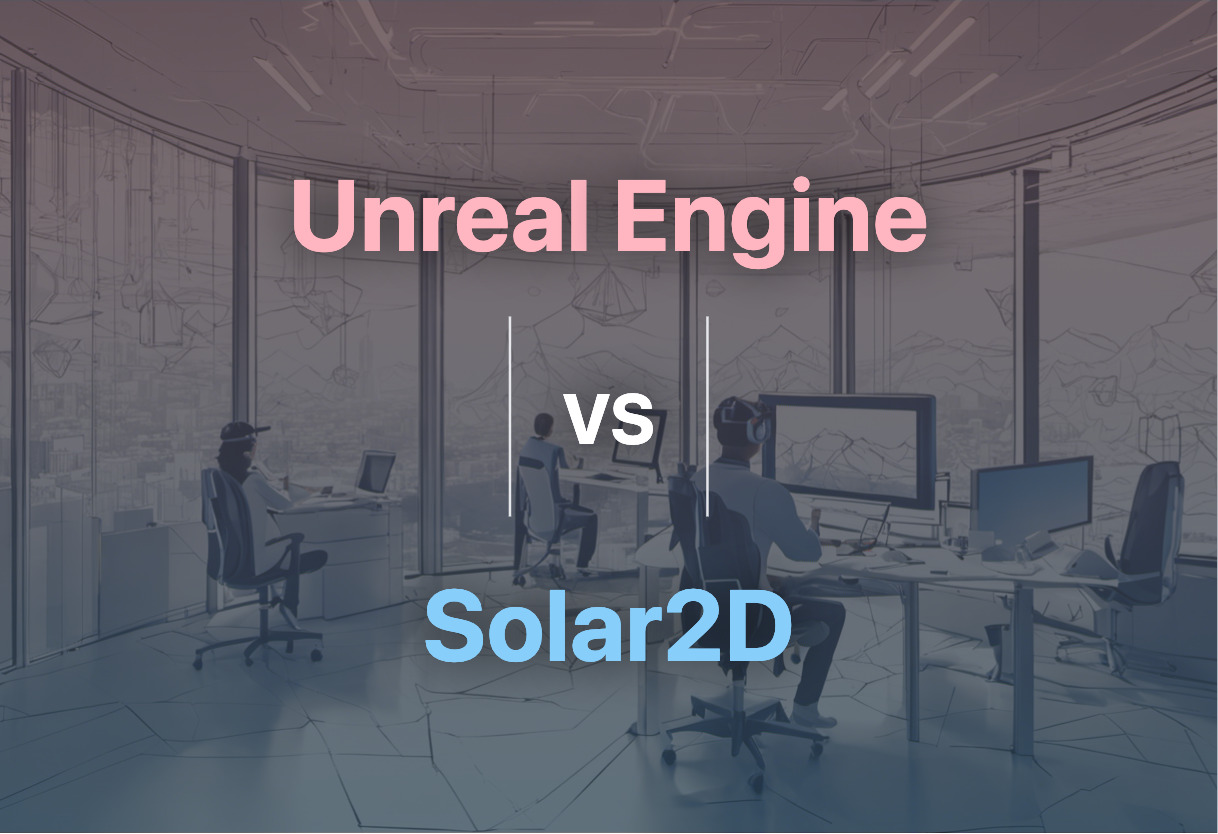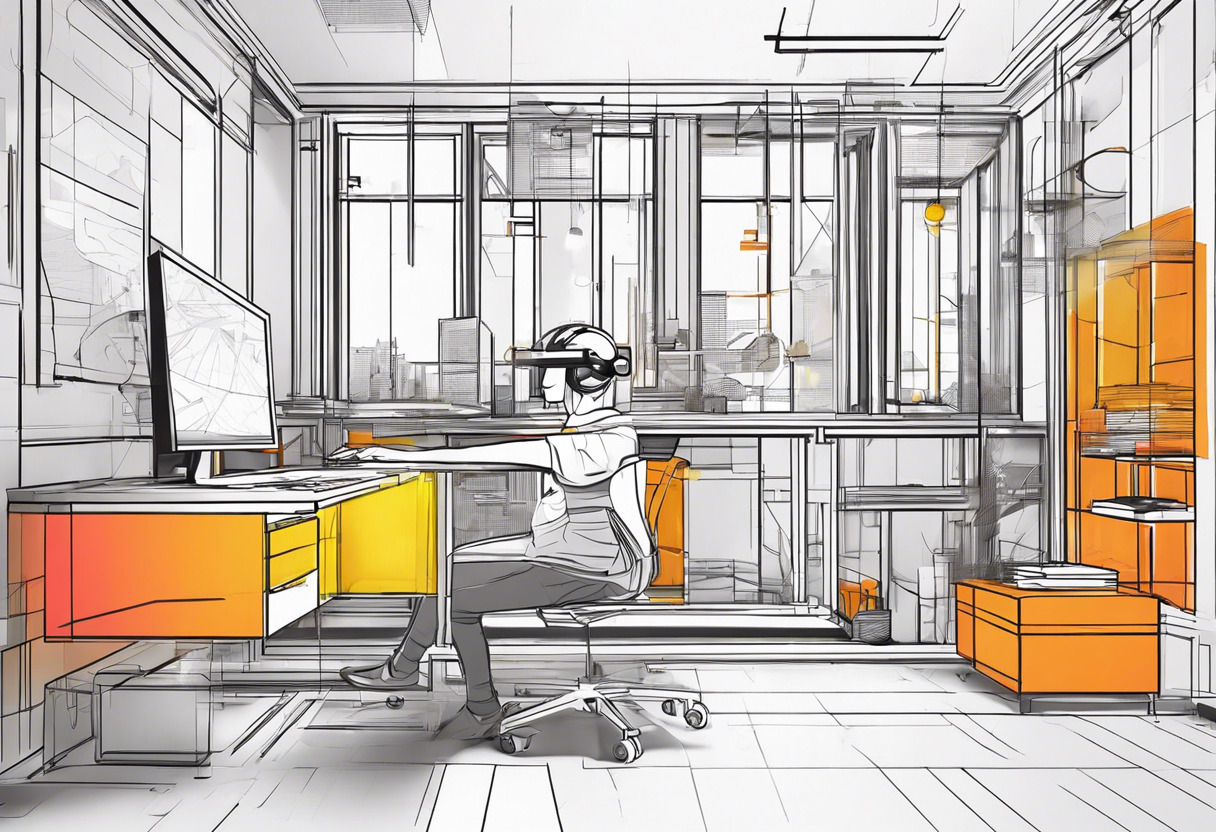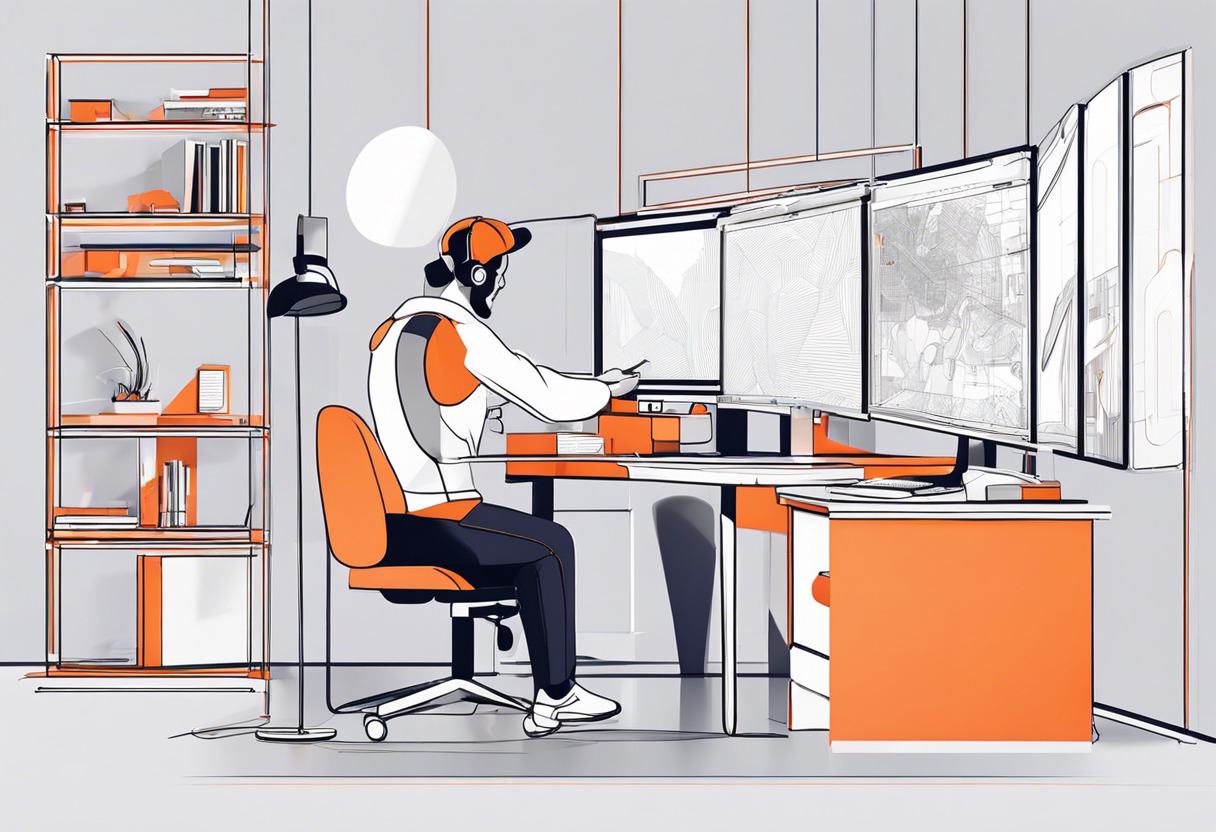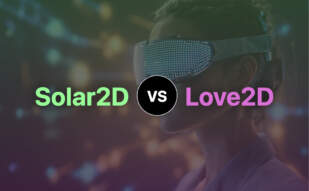For developers diving into the world of 3D gaming, the robust Unreal Engine outperforms Solar2D. However, if you’re seeking a lighter, more beginner-friendly platform for 2D mobile and desktop applications, Solar2D‘s Lua-based scripting and cost-effective nature makes it the better choice.

Key Differences Between Unreal Engine and Solar2D
- Programming languages: Unreal Engine utilizes C++, Solar2D uses Lua.
- Application focus: Unreal Engine is geared towards 3D gaming, Solar2D excels in 2D app development.
- Unreal Engine levies a 5% royalty on revenues exceeding $1 million, Solar2D is 100% free with no hidden fees or royalties.
- Solar2D offers an instant update simulator for real-time testing, Unreal Engine does not have an equivalent feature.
- Unreal Engine provides a marketplace for users to sell or buy creations, Solar2D lacks a comparable platform.
- Unreal Engine offers a free version for schools and universities, Solar2D does not provide an educational program.
- Solar2D is open-source under an MIT license, Unreal Engine source code is only available to registered developers.
| Comparison | Unreal Engine (UE) | Solar2D |
|---|---|---|
| Initial Release | 1998 | December 2009 |
| Latest Release | Unreal Engine 5, launched in April 2022 | Stable release March 30, 2023 |
| Written In | C++ | Lua (Corona API) |
| Revenue Model | 5% of revenues over USD 1 million, waived for games published on the Epic Games Store | 100% free, no hidden fees or royalties |
| Supported Platforms | Desktop, mobile, console, VR platforms | Mobile, desktop, TV devices: iOS, tvOS, Android, Android TV, macOS, Windows, Linux, HTML5 |
| Developer Community & Support | Unreal Engine Marketplace allows users to sell/purchase developer’s work, Unreal Development Kit available for modders | Vibrant developer community, free directory and Solar2D plugins for in-app support |
| Licensing | Commercial use with revenue requirements | Open source, MIT licensed |
| Development Environment | C++ for game development within the tool | Solar2D Simulator for direct app building and Solar2D Native for integration with Xcode or Android Studio project |
| Target Audience | Suitable for various game genres and industries including film and television | Suitable for 2D mobile applications, desktop applications, connected TV applications |
What Is Unreal Engine and Who’s It For?
Unreal Engine (UE) is a highly potent 3D computer graphics game engine developed by Epic Games – a name that became an embodiment of real-time 3D gaming since its initiation in 1998. Supporting a wide variety of platforms from desktop to virtual reality, UE’s versatility extends beyond the gaming industry, influencing realms of film and television.
If you are an aspiring developer wanting to create immersive, richly detailed virtual environments, prefer founding your creations on C++, or an educational institution in pursuit of a free platform for technology education, Unreal Engine would be an apt fit.

Pros of Unreal Engine
- Supports a comprehensive range of platforms.
- Offers basic project templates serving as starting points for developers.
- Revenue-sharing model waivable for games published on the Epic Games Store.
- Robust marketplace providing opportunities for developers to sell or purchase work.
- Free for educational institutions.
Cons of Unreal Engine
- Charge of 5% post reaching revenue of USD 1 million could be an investment roadblock for startups.
What Is Solar2D and Who’s It For?
Solar2D, formerly known as Corona SDK, is an MIT licensed robust open-source game engine peculiarly contented for cross-platform mobile app development. The powerful engine thrives on Lua for scripting and provides an instant-update Simulator for real-time code and asset modifications.
Whether you are a venture rooted in application development, a game designer targeting multiple platforms, or a beginner stepping into the programming cosmos backed by a vibrant community, Solar2D offers a fluid, efficient, and inclusive journey.

Pros of Solar2D
- Supports a wide variety of platforms for comprehensive application development.
- Empowered by Lua, promoting a short learning curve for beginners.
- No hidden fees or royalties, facilitating quicker monetization.
- A potent development community for peer-to-peer support.
- Promotes ownership, allowing developers to retain rights to the source code.
Cons of Solar2D
- Less suitable for 3D app development.
Unreal Engine vs Solar2D: Pricing
While the Unreal Engine employs a royalty model, charging 5% for revenue exceeding USD 1 million, Solar2D operates completely free, eliminating unexpected charges and royalty costs.
Unreal Engine
The pricing model of the Unreal Engine is primarily structured around royalties. Once revenue exceeds USD 1 million, Epic Games charges a 5% royalty fee. However, this fee is waived for games published directly on the Epic Games Store. The Unreal Engine Marketplace also fosters exchanges between creators and consumers, with content creators receiving 88% of generated revenues. In a move to support education, Unreal Engine is offered free of charge to schools and universities. For all users, Unreal Engine 4 was released for free, with a royalty of 5% charged on products earning over $3,000 per quarter.
Solar2D
Solar2D stands in stark contrast with its completely free, open-source model. It complies with an MIT license and ensures privacy, with no hidden fees or royalties involved for developers. Users are allowed to modify and distribute under the open-source license, making it economically accessible to a larger audience. This price advantage coupled with powerful APIs and a broad range of platform support keeps it a strong competitor against rival technologies.
Code Examples for Unreal Engine & Solar2D
Unreal Engine
In this Unreal Engine code snippet, we will create a simple first person shooter mechanic. Unreal Engine relies heavily on C++ and its proprietary Unreal Engine scripting language, Blueprint. Hence, knowledge of both C++ and Blueprint are prerequisites. In terms of software requirements, the Unreal Engine version used should be 4.26 or above.
// Add this to Character's header file
UFUNCTION()
void Fire();
UPROPERTY(EditAnywhere)
UParticleSystem* MuzzleFlash;
// Add this to Character's .cpp file
void AYourCharacter::Fire()
{
if (MuzzleFlash)
{
UGameplayStatics::SpawnEmitterAttached(MuzzleFlash, GetMesh(), "MuzzleFlashSocket");
}
FHitResult Hit;
FVector ShotDirection;
bool bSuccess = GunTrace(Hit, ShotDirection);
if (bSuccess)
{
UGameplayStatics::ApplyPointDamage(Hit.GetActor(), Damage, ShotDirection, Hit, nullptr, this, DamageType);
}
}Solar2D
This Solar2D code snippet illustrates the creation of a simple physics-based bouncing ball mechanic. Solar2D uses Lua for scripting, so a preliminary understanding of Lua is necessary. No specific version requirement is needed to execute this code successfully.
-- Include Physics engine
local physics = require("physics")
physics.start()
-- Set Gravity
physics.setGravity( 0, 9.8)
-- Create a simple bouncing ball
local ball = display.newCircle( 100, 100, 20)
ball:setFillColor( 1, 0, 0)
-- Add physics to the ball
physics.addBody( ball, "dynamic", { bounce = 0.8, radius = 20})
-- Create ground
local ground = display.newRect( display.contentWidth/2, display.contentHeight, display.contentWidth, 10)
-- Add physics to the ground
physics.addBody( ground, "static")The Final Decision: Unreal Engine vs Solar2D
In the clash between Unreal Engine and Solar2D, making the final call hinges on your individual specifications, workflow, and targets.
Seasoned Game Developers
For experienced game developers aiming to create visually stunning 3D games, Unreal Engine emerges as a robust choice. With its advanced features such, multitude of game templates, C++ coding, and the flexibility of mod options– evident with UnrealEd’s real-time constructive solid geometry operations, Unreal Engine sits at the apex of 3D game development.

Multi-platform App Developers
Solar2D outshines Unreal Engine for those seeking to develop mobile, desktop, or TV applications across multiple platforms. Single code base efficiency, integrated Lua based scripting, and an array of plugins offer a streamlined workflow. Moreover, Solar2D’s no-royalty, open source nature should certainly appeal to cost-conscious developers.

Entry-level Developers
For budding developers, Solar2D raises the bar with its simplicity. If your aspiration is quick learning curves and fast development cycles, Solar2D provides an intuitive platform. Lua scripting language, an active community and other supportive resources make it an unrivaled starter tool.

AR/VR Creators
Augmented and Virtual Reality creators seeking to explore innovative dimensions should lean towards Unreal Engine. Its superior graphics rendering capabilities, C++ language proficiency, and vast platform support assures an elevated AR/VR experience.

Translating the battle between Unreal Engine and Solar2D into a succinct verdict: Solar2D reigns supreme for user-friendly, cross-platform development, while Unreal Engine’s powerful capabilities make it the go-to for creating high-fidelity visuals in game development and AR/VR applications.
Logan Bellbrook
Content writer @ Aircada with a knack for nature & AR/VR/XR. Blogging the intersection of tech & terrain.





